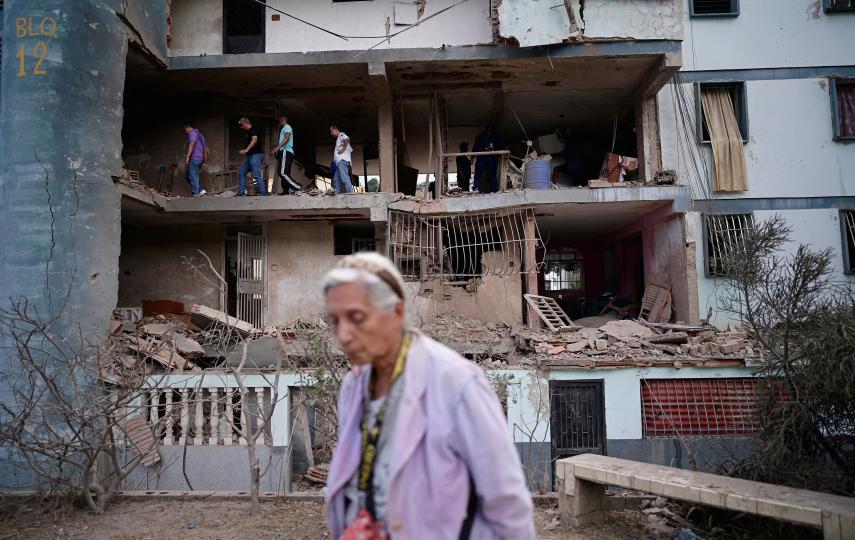WINDHOEK
After a century of exporting raw diamonds to be cut and polished abroad, Southern Africa is finally taking steps to add value to its gemstones and boost local revenues.
This week, South Africa joined Namibia in approving legislation that seeks to increase the supply of diamonds to local gem cutters to help the domestic jewellery sector and create jobs.
Angola's first diamond cutting and polishing factory - Africa's largest – was opened outside the capital, Luanda, last week by Lev Leviev Diamonds (LLD), the world's second largest diamond trading company. The company has similar plants in Namibia, South Africa, Moscow and Armenia.
Half the world's diamonds are produced in Africa, with four Southern African countries - Botswana, South Africa, Angola and Namibia - contributing the bulk of the trade, but none of these countries has a thriving domestic diamond industry.
Diamond mining accounts for 35 percent to 40 percent of Botswana's Gross Domestic Product, 10 percent of Namibia's, seven percent of Angola's and one percent of South Africa's.
The Russian-born Israeli diamond tycoon Lev Leviev, who owns LLD, caused a stir last week at an international diamond conference in the Namibian capital, Windhoek, when he called for a free-flow of rough diamonds in southern Africa, saying it was the only way to stimulate growth in the industry.
"A local diamond industry in this region can only develop when rough diamonds are supplied across the board, and not only to the members of an exclusive club of 'yes-men'," he said, hinting at the monopoly held by diamond giant De Beers.
De Beers controls about 70 percent of the world diamond trade by stockpiling rough stones and then limiting the amount sold. Rough stones mined at its own operations in Botswana, South Africa, Namibia and Tanzania are shipped to London, where its selling arm, the Diamond Trading Company (DTC) sorts and mixes them into "parcels".
The parcels are sold at 10 sales per year - called 'sights' – in London, Johannesburg, Tel Aviv and Antwerp. An exclusive group of 90 diamond traders, called 'sight holders', are invited to these sales to buy the parcels.
However, in 2000 Namibia passed new legislation giving government the leverage to force diamond producers to make raw stones available to manufacturers operating in the country.
De Beers has a shareholding and profit-taking arrangement with the Namibian government through the Namdeb diamond company, and the new law could impact on this relationship.
The government has yet to make use of these new powers, but with growing demand from the Leviev group to buy diamonds mined in Namibia for its cutting and polishing plant in Windhoek it might do so in the near future.
Traditionally, most rough diamonds from Africa have been shipped "to far away countries for value addition and this should change," Leviev told the conference held to discuss the diamond industry's future.
"We will expand to the value-adding chain here in southern Africa, where the diamonds are mined, by setting up a jewellery factory and branding these diamond products worldwide," Leviev said.
Pressure from African governments has been influencing the new trend "to bring value addition to those countries in Africa where the diamonds are mined," the Namibia-based Institute for Public Policy Research said in a recent report, 'Managing Diamond Dependency'.
Though South Africa is the fourth largest producer of diamonds after Botswana, Russia and Canada, it has a small cutting and polishing industry. However, new laws intend to enforce a change.
Mining companies in South Africa must in future offer all diamonds intended for export to the government's Diamond Exchange and Export Centre (DEEC), and sell a percentage of uncut stones to the new State Diamond Trader (SDT).
The SDT will promote equal access to diamonds through its purchase and supply of diamonds for value adding, or "beneficiation".
Neighbouring Botswana, the world largest diamond producer, does not plan to emulate South Africa and Namibia.
The Botswana government is depending on De Beers' commitment to move its diamond aggregation operations from London to the capital, Gaborone, by 2009 to stimulate local industry, and president Festus Mogae himself lobbied for the relocation of the company.
"We, the producers, are not getting enough back in terms of revenues," he told the South African parliament in Cape Town recently.
"If they aggregate everything [in Botswana], you are migrating, say, $5.9 billion worth of diamonds to the SADC [Southern African Development Community] region," explained Mogae, who is also an economist.
Botswana produces about 30 million carats per annum, but has a few cutting and polishing facilities. The Debswana diamond mining company runs the country's diamond-mining operations through a joint-venture agreement between the government and De Beers.
After the end of a 27-year civil war, Angola, potentially seen as one of the world's largest diamond producers, is already on track for developing a local diamond industry.
The new Angola Polishing Diamond SA factory is a joint venture between state diamond company Endiama, which has a 48 percent stake, Leviev's LLD with 47 percent, and a local consortium which holds five percent. It has a processing capacity of around $30 million worth of diamonds a month and will employ around 600 people.
With global demand for diamond jewellery increasing steadily, the future of the industry in the region appears to be favourable.
This article was produced by IRIN News while it was part of the United Nations Office for the Coordination of Humanitarian Affairs. Please send queries on copyright or liability to the UN. For more information: https://shop.un.org/rights-permissions




